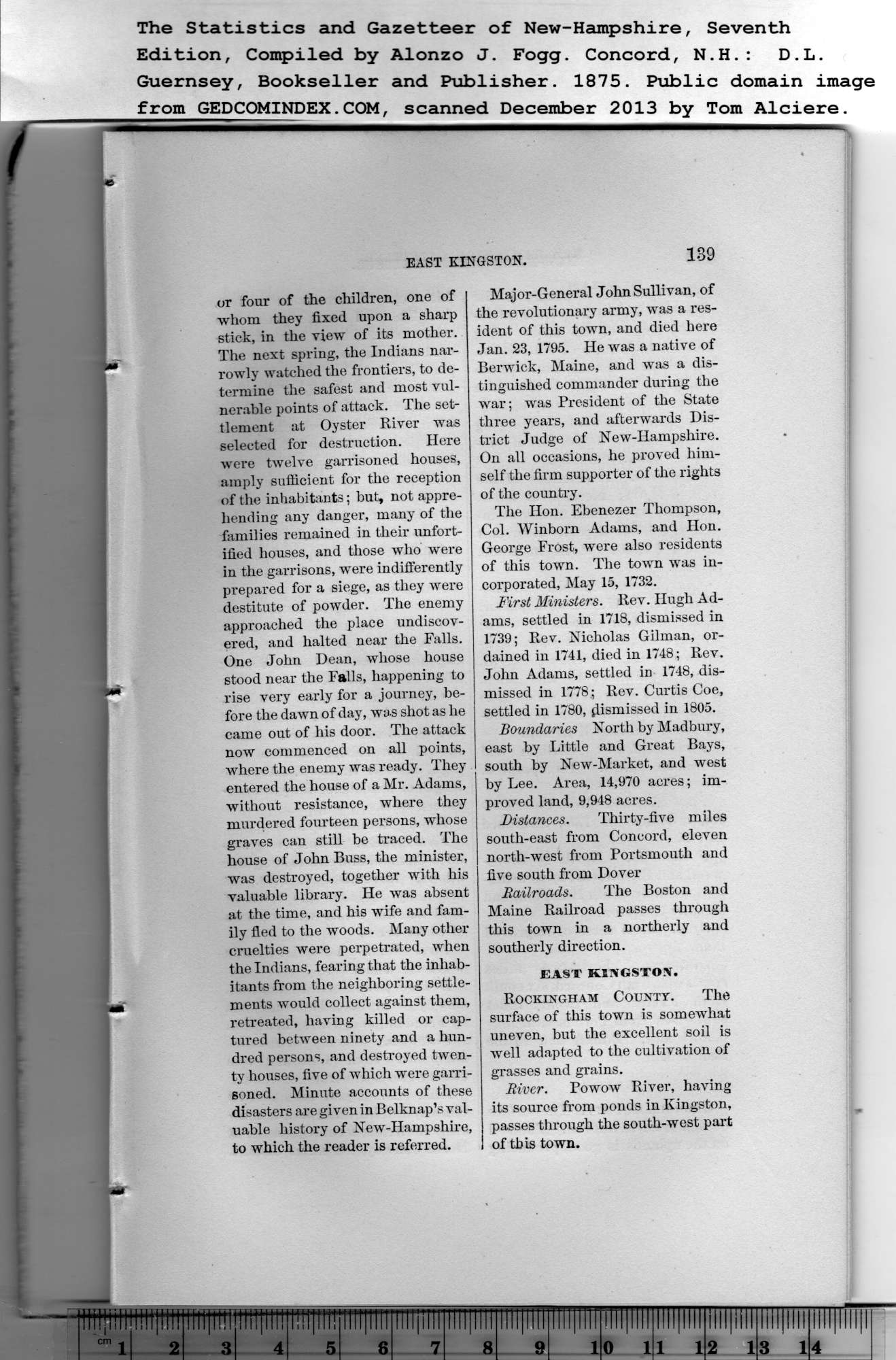|
or four of the children, one of
whom they fixed upon a sharp
stick, in the view of its mother.
The next spring, the Indians nar-
rowly watched the frontiers, to de-
termine the safest and most vul-
nerable points of attack. The set-
tlement at Oyster River was
selected for destruction. Here
were twelve garrisoned houses,
amply sufficient for the reception
of the inhabitants; but, not appre-
hending any danger, many of the
families remained in their unfort-
ified houses, and those who were
in the garrisons, were indifferently
prepared for a siege, as they were
destitute of powder. The enemy
approached the place undiscov-
ered, and halted near the Falls.
One John Dean, whose house
stood near the Falls, happening to
rise very early for a joui’ney, be-
fore the dawn of day, was shot as he
came out of his door. The attack
now commenced on all points,
where the enemy was ready. They
entered the house of a Mr. Adams,
without resistance, where they
murdered fourteen persons, whose
graves can still be traced. The
house of John Buss, the minister,
was destroyed, together with his
valuable library. He was absent
at the time, and his wife and fam-
ily fled to the woods. Many other
cruelties were perpetrated, when
the Indians, fearing that the inhab-
itants from the neighboring settle-
ments would collect against them,
retreated, having killed 01* cap-
tured between ninety and a hun-
dred persons, and destroyed twen-
ty houses, five of which were garri-
soned. Minute accounts of these
disasters are given in Belknap’s val-
uable history of New-Hampshire,
to which the reader is referred.
The Statistics and. Gazetteer of New-Hampshire, Seventh
Edition, Compiled by Alonzo J. Fogg. Concord, N.H.: D.L.
139
Major-General John Sullivan, of
the revolutionary army, was a res-
ident of this town, and died here
Jan. 23, 1795. He was a native of
Berwick, Maine, and was a dis-
tinguished commander dui'ing the
war; was President of the State
three years, and afterwards Dis-
trict Judge of New-IIampshire.
On all occasions, he proved him-
self the firm supporter of the rights
of the country.
The Hon. Ebenezer Thompson,
Col. Winborn Adams, and Hon.
George Frost, were also residents
of this town. The town was in-
corporated, May 15, 1732.
First Ministers. Rev. Hugh Ad-
ams, settled in 1718, dismissed in
1739; Rev. Nicholas Gilman, or-
dained in 1741, died in 1748; Rev.
John Adams, settled in 1748, dis-
missed in 1778; Rev. Curtis Coe,
settled in 1780, dismissed in 1805.
Boundaries North by Madbury,
east by Little and Great Bays,
south by New-Mai'ket, and west
by Lee. Area, 14,970 acres; im-
proved land, 9,948 acres.
Distances. Thirty-five miles
south-east from Concord, eleven
north-west from Portsmouth and
five south from Dover
Railroads. The Boston and
Maine Railroad passes through
this town in a northerly and
southerly direction.
EAST KINGSTON.
Rockingham County. The
surface of this town is somewhat
uneven, but the excellent soil is
well adapted to the cultivation of
grasses and grains.
River. Powow River, having
its source from ponds in Kingston,
passes through the south-west part
of this town. | |
